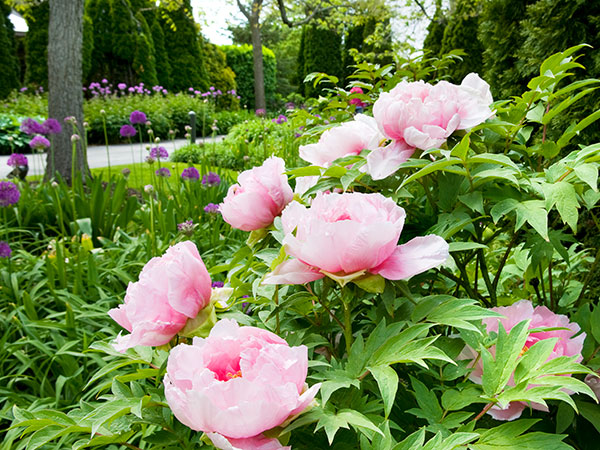
When cutting peony blossoms to bring indoors, remove as few leaves from the plant as possible. Remove spent blooms after they are finished flowering.
Remove spent blooms of annuals and some perennials to encourage new flower formation. Stake tall perennials and continue to tie annual and perennial vines to supports. Continue to apply repellents to emerging summer-blooming lilies, if rabbits and deer have been a problem in the past.
Fertilize annuals in containers, baskets, and window boxes with a quarter-strength balanced fertilizer every seven to ten days. Always water the plants before adding liquid fertilizer.
Fertilize bulbs with a 9-9-6 slow-release fertilizer if you did not do so at planting time. Mark the spots with small stakes to repeat fertilizer application in the fall (when plants are not visible).
Continue to remove yellowing leaves of summer-flowering bulbs.
Tall, floppy plants such as chrysanthemums, asters, and tall sedums can be cut back by as much as half or pinched to regulate their height.
Sow seeds of biennials, such as hollyhock, directly into the garden this month for next year's bloom. Mark the area carefully to avoid accidentally disturbing the seeds.
Monitor plants, especially succulent the new growth, for insects. Infested plants can be hosed down to remove small insect populations. Don't apply chemical treatments if ladybugs or other predator insects are present.
Mite activity often increases in hot, dry weather. Symptoms include stippled foliage which can be removed from plant. Refrain from applying chemical miticides which will also kill beneficial mites and increase mite populations. Consider releasing predators such as ladybugs or praying mantis to consume unwanted mites.

